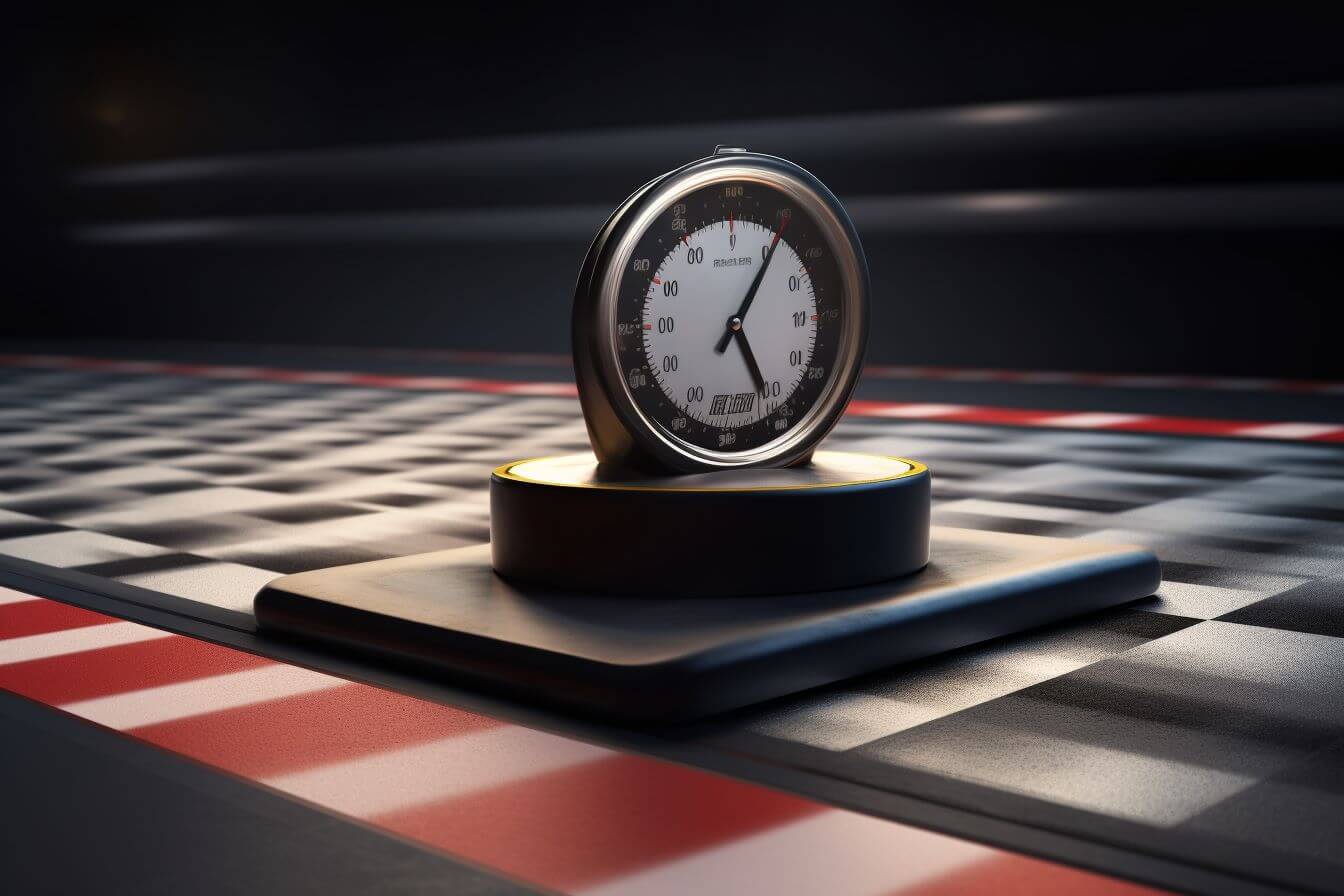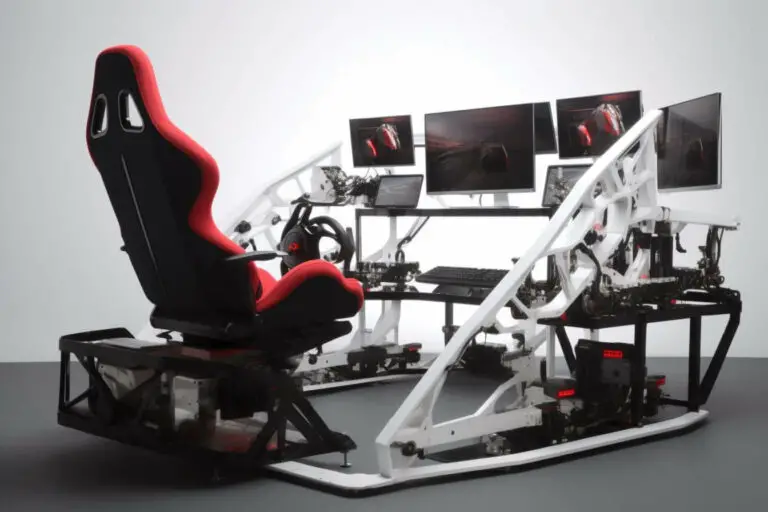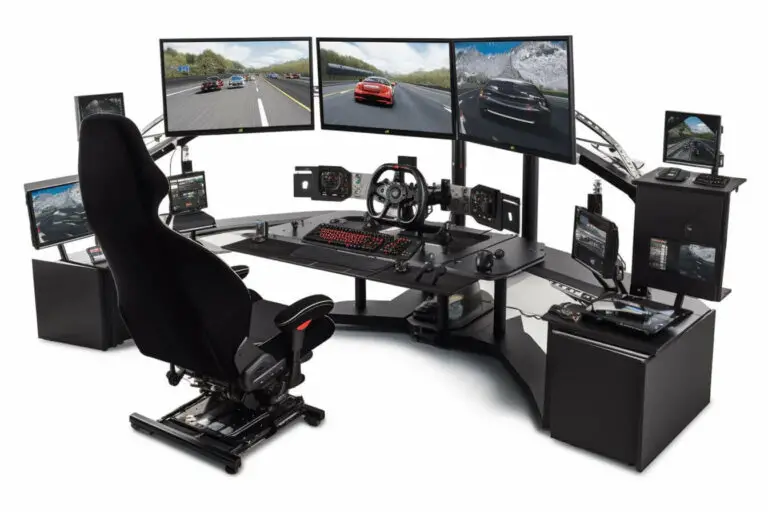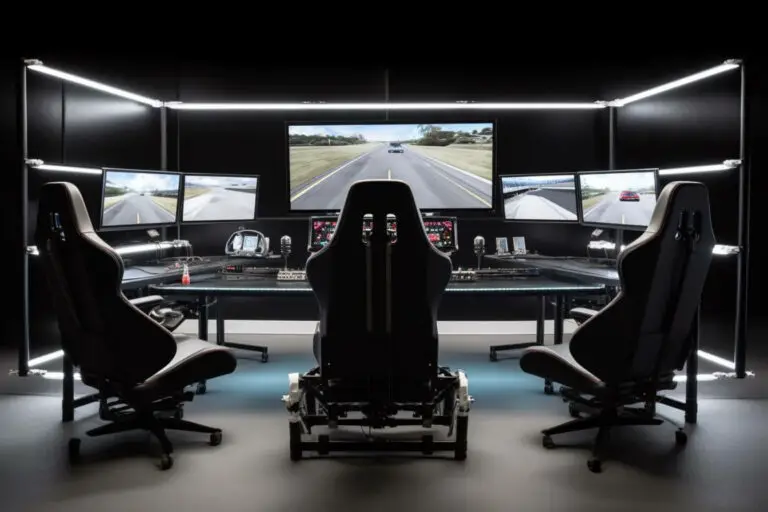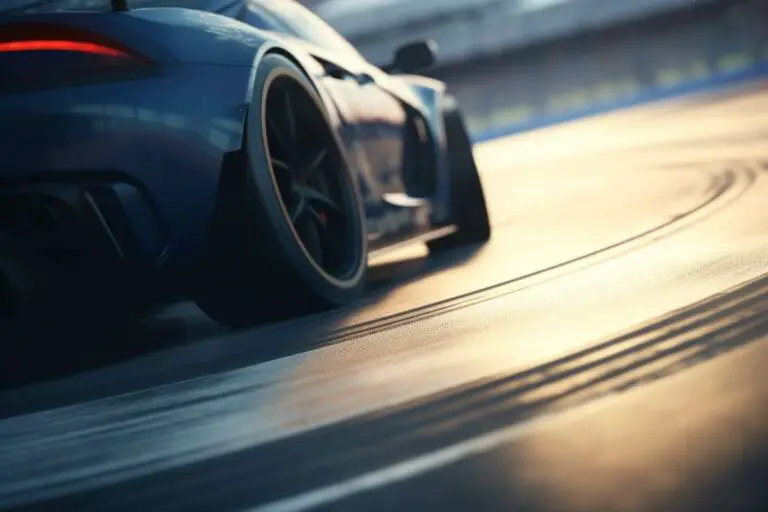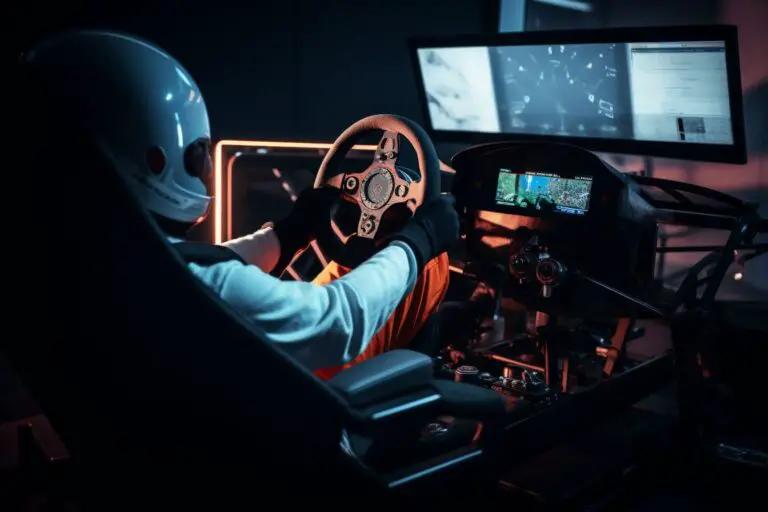How To Improve Your Sim Racing Lap Times: Shave Seconds Off Your Lap Time
- How To Improve Your Sim Racing Lap Times: Shave Seconds Off Your Lap Time
- Introduction
- Master The Racing Line
- Understand And Apply Vehicle Setup
- Brake And Throttle Control
- Utilize Driving Aids And Telemetry Tools
- Learn From Others
- Practice Consistency And Patience
- Mental Preparation And Mindset
- Conclusion
- Frequently Asked Questions
- How Can I Improve My Sim Racing Lap Times If I'm New To Sim Racing And Have Limited Experience With Racing Games?
- Are There Any Specific Sim Racing Hardware Or Accessories That Can Help Me Improve My Lap Times, Such As Steering Wheels, Pedals, Or Seats?
- Can I Apply Real-World Racing Techniques And Strategies To Sim Racing In Order To Shave Seconds Off My Lap Time, Or Are There Unique Aspects To Sim Racing That Require A Different Approach?
- How Can I Find The Best Sim Racing Community Or Group To Join In Order To Learn From Others And Improve My Lap Times More Effectively?
- Are There Any Specific Exercises Or Training Routines That I Can Follow Outside Of The Sim Racing Game To Help Improve My Reaction Times, Focus, Or Overall Racing Skills?
- Conclusion
Did you know that the top sim racers in the world can reach speeds of up to 230 mph on virtual tracks? That’s right, these enthusiasts have managed to turn their passion for racing games into a serious competitive sport.
With more and more people joining the ranks of sim racers every day (especially since the pandemic forced all of us to find a hobby you can do from home), it’s no surprise that many are looking for ways to improve their lap times and get ahead of the competition.
If you’re one of those avid sim racers aiming to shave seconds off your lap time, then you’ve come to the right place! In this article, we’ll discuss various strategies and techniques that will help propel you toward becoming an unstoppable force on virtual racecourses.
From fine-tuning your car setup to mastering cornering techniques, we’ve got all bases covered so buckle up, and let’s put the pedal to the metal.
Other Interesting Articles to improve your Sim Racing Techniques
What Are the Top Techniques to Master Corners in Sim Racing?
How Can I Optimize My Car Setup for Faster Lap Times in Sim Racing?
Discover the Insider Tips for Smoother Braking and Acceleration in Sim Racing
Which Driving Aids Can Help You Become a Faster Sim Racer?
How to Consistently Hit the Perfect Racing Line for Ultimate Speed
What Can You Learn from Pro Sim Racers to Boost Your Performance?
Uncover the Mental Strategies to Stay Focused and Improve Your Sim Racing Skills
How to Analyze Telemetry Data to Unlock Your Full Sim Racing Potential
How to Train Your Way to Sim Racing Greatness: Tips, Tricks, and Techniques
Introduction
When it comes to sim racing, mastering the ideal racing line is crucial for improving your lap times and overall performance. The importance of a perfect racing line cannot be overstated, as it directly affects your cornering speed and exit velocity on each turn. Additionally, understanding how to analyze tracks and adapt your racing lines accordingly can make all the difference in shaving seconds off your time.
Developing consistency with your racing lines is essential, but this requires practice and dedication. Establishing effective practice routines will help you achieve that desired level of precision while navigating through corners.
It’s also important to use visual markers around the track to guide your braking points, turn-in points, and apexes – these cues provide valuable information about when to initiate certain actions during a race. Furthermore, getting familiar with car setup basics plays an integral role in optimizing vehicle handling characteristics tailored specifically to individual driving styles and preferences.
Smooth braking techniques are another contributing factor in reducing lap times without compromising safety or control over the vehicle. By applying gradual pressure on the brake pedal instead of abrupt inputs, drivers can maintain better balance throughout turns leading up to proper acceleration upon exiting them – ultimately allowing for faster laps consistently achieved across multiple attempts at any given circuit layout without unnecessary wear-and-tear inflicted onto tires or mechanical components from aggressive maneuvers executed improperly due excessive haste behind wheel (an issue commonly associated amongst novice racers).
Master The Racing Line
First of all, you need to learn the track layout, so you can get familiar with the terrain, turns, and straightaways.
Next, you should analyze the racing line and figure out the ideal path around the track.
After that, it’s time to practice and perfect your lap by taking the racing line you’ve identified and getting comfortable with how it feels.
With practice, you’ll be able to shave seconds off your lap time and really master the racing line.
Learn The Track Layout
Imagine cruising down the racetrack, feeling the adrenaline pumping through your veins as you expertly navigate each turn.
To truly shave seconds off your lap time, it’s essential to learn the track layout and master the racing line basics. By familiarizing yourself with the circuit characteristics such as corner entry and exit points, braking zones, and maximizing corner speed, you’ll be well on your way to improving your sim racing performance.
As you dive deeper into mastering track-specific racing lines, don’t forget that every course is unique and may require different approaches in terms of late apex or early apex techniques.
Pay close attention to how these variations affect your overall lap times and make adjustments accordingly. The key here is constant practice and experimentation; by doing so, you’ll develop an innate understanding of which approach works best for any given circuit.
Remember that a fast lap isn’t just about flat-out speed – racing line precision plays a crucial role in achieving those sought-after quick times.
Be mindful of your braking points along each section of the track to maintain optimal control over your vehicle while negotiating turns at high velocity. With enough dedication and persistence, you’ll soon discover that perfect balance between aggression and finesse which will propel you towards faster lap times than ever before!
Analyze The Racing Line
Now that we’ve covered the importance of mastering racing lines and understanding track layouts, let’s delve into analyzing the racing line itself.
The apex definition is crucial in this process as it refers to the point on a corner where your vehicle comes closest to the inside edge of the track.
Fine-tuning your car’s suspension tuning, tire pressure adjustments, and aerodynamics will contribute significantly to achieving optimal racing lines.
A track-specific setup will ensure that you’re maximizing every bit of performance available from your machine.
Analyzing the racing line involves examining how car balance affects vehicle behavior through various corners – this includes optimizing car setup for both entry and exit phases.
By doing so, you’ll be able to exploit all possible advantages when negotiating turns with precision and confidence.
Corner exit optimization should never be overlooked; after all, carrying momentum out of each turn directly translates into better overall lap times.
Always pay close attention to braking markers as well; these visual cues can guide you towards selecting appropriate braking points which are vital for maintaining control during high-speed maneuvers.
Through persistent practice and keen observation, you’ll develop an intuitive sense of how best to navigate any given circuit while simultaneously refining your vehicle’s setup for maximum efficiency.
Keep experimenting with different approaches until you find what works best for your driving style, ultimately leading to faster laps and improved sim racing performance!
Practice The Perfect Lap
As you continue to analyze and fine-tune your racing lines, don’t forget the importance of practice imitation in achieving personal progress.
Consistent lap times are crucial for developing a strong racing discipline, which will ultimately improve your sim racing stamina as well.
By focusing on on-track consistency and steady improvement through incremental gains, you’ll develop mental strength that plays an essential role in mastering the art of racing psychology.
Practice makes perfect – so spend ample time honing your skills by attempting to replicate your best laps over and over again. This repetitive process will help solidify good habits while gradually eradicating any flaws hindering your performance.
Additionally, practicing with purpose ensures that you maintain focus and motivation throughout each session, contributing positively towards overall growth in skill level.
Remember that becoming proficient at sim racing is a journey that requires patience and dedication.
Embrace every opportunity to learn from mistakes, celebrate small victories along the way, and constantly strive for excellence both behind the wheel and when analyzing various aspects of racecraft.
As long as you stay committed to this path, rest assured that success will follow suit!
Understand And Apply Vehicle Setup
I understand that vehicle dynamics are essential to getting the most out of your car and improving lap times.
To adjust the setup, you’ll need to look at things like tire pressure, suspension, and gearing.
It’s important to experiment and find the right balance of these elements to get the optimal performance.
With the right setup, you can shave seconds off your lap time!
Understand Vehicle Dynamics
So you want to shave seconds off your lap time, huh? Well, understanding vehicle dynamics is a crucial part of achieving that goal. By getting to know the ins and outs of how your car behaves under various conditions, you can better anticipate its reactions on the track and adjust your driving style accordingly.
Plus, it doesn’t hurt to have some knowledge about setup components – after all, who wouldn’t want their virtual ride to be as finely tuned as possible?
One way to get a feel for your car’s unique characteristics is through setup experimentation. This involves tweaking aspects such as brake control, suspension settings, tire pressures, and more to strike the perfect balance between performance and handling.
And let’s not forget about driving finesse – mastering techniques like trail braking (gradually releasing the brakes while entering a corner), throttle steering (using the accelerator to help steer the car) and nailing that ideal brake-throttle balance will give you an edge over other racers.
Don’t worry if this all sounds overwhelming at first; there are resources available to help ease you into grasping these concepts. A good starting point would be familiarizing yourself with a driving aids overview – think traction control systems or stability management programs designed to assist drivers in maintaining control of their vehicles.
These tools can provide valuable insight into what’s happening beneath the hood during each high-speed turn or daring overtaking maneuver. Remember: practice makes perfect! Keep experimenting with different setups and refining those advanced techniques until every aspect of your sim racing experience feels second nature – then watch those lap times tumble down!
Adjust Vehicle Setup
So, let’s delve deeper into the world of fine-tuning setups. Adjusting your vehicle setup can be both an art and a science, often requiring extensive trial and error to find that sweet spot between performance and control.
Start by consulting any available setup documentation for guidance on what each setting does – this will save you time in the long run as you’ll have a better understanding of how changes affect your car’s behavior.
There are numerous setup improvement strategies at your disposal, such as adjusting throttle modulation, pedal sensitivity or braking technique. Don’t be afraid to experiment with various settings like ABS levels, stability control thresholds or other driving assist features until you find what works best for you.
Remember: there is no one-size-fits-all solution when it comes to vehicle setup – every driver has unique preferences and skillsets.
So go ahead, get stuck into the nitty-gritty details of your virtual ride! With persistence and patience, you’ll discover just how rewarding sim racing can be when everything feels perfectly tailored to suit your style. And who knows? You might even uncover new talents along the way!
Brake And Throttle Control
Braking is an important part of sim racing and can help you shave off a few seconds from your lap time. Knowing when to brake and how much pressure to apply to the pedal can be tricky, but mastering it can be very rewarding.
When it comes to throttle control, it’s important to use smooth inputs and not to over-accelerate, as this can hurt your lap time.
Heel-toe shifting is a technique that involves pressing both the brake and the throttle simultaneously to change gears quickly, and is a valuable skill to have for sim racing.
With the proper braking technique, throttle control, and heel-toe shifting, you can improve your lap times and come out on top in your next race.
Braking Technique
We all know that finding the perfect braking technique can make a world of difference in our sim racing lap times. It’s not just about slamming on the brakes and hoping for the best; it requires patience, skill, and an understanding of how your car behaves under different conditions.
So let’s dive in and see what we can learn from the experts to help us shave those precious seconds off our laps.
One way to improve our braking technique is by studying performance data through telemetry analysis. This data-driven improvement method allows us to break down each section of the track and closely examine where we might be losing time. By analyzing this information, sim racers can identify areas for improvement and start making changes to their driving style accordingly.
Another excellent resource when looking to enhance our braking abilities is engaging with sim racing tutorials or consulting with experienced drivers who have already mastered these skills. Learning from the best means you’re taking advantage of years of expertise, allowing you to implement new strategies more effectively.
Finally, once you’ve gathered enough knowledge on optimal braking techniques, it’s crucial not to forget about skill implementation during practice sessions. The key here is repetition – consistently applying your newfound skills will eventually lead them to become second nature while out on the track. Remembering everything you’ve learned from telemetry analysis, expert advice, and sim racing tutorials will undoubtedly lead you closer towards achieving faster lap times than ever before—and isn’t that what we’re all striving for?
Throttle Control
As we continue to explore ways to improve our sim racing skills, it’s essential not to overlook the importance of throttle control. Just like with braking techniques, finding the perfect balance when applying and releasing the gas can make a significant difference in your lap times.
Developing an understanding of progressive acceleration and how it impacts your car’s behavior on different sections of the track is crucial for optimizing performance.
Utilizing telemetry software during testing sessions can help identify areas where more precise throttle control could lead to faster laps. Data interpretation allows you to spot inconsistencies in your driving pattern and make setup adjustments based on telemetry insights combined with driver feedback.
Sharing this information within the sim racing community can also be invaluable as experienced racers may have additional tips or data-driven tweaks that could further enhance your application of throttle control. Through these shared experiences, drivers can learn from each other and apply necessary driving style adjustments.
It’s important always to remember that practice makes perfect – by consistently applying what you’ve learned from experts, tutorials, and telemetry analysis during testing sessions, you’ll gradually develop a strong sense for optimal throttle control.
The combination of improved braking technique and refined throttle management will undoubtedly result in increased confidence out on the track, leading to consistently quicker lap times overall. So keep practicing those newfound skills – soon enough, they’ll become second nature!
Heel-Toe Shifting
As you continue to refine your braking and throttle control skills, it’s also essential to explore other racing techniques employed by the pros. Analyzing pro sim racers’ performances can offer valuable insights into their various approaches, such as heel-toe shifting – a technique that allows for simultaneous braking and downshifting while maintaining optimal rev-matching.
Replay analysis and ghost lap comparison are useful tools in understanding how this method is effectively implemented during races.
By engaging with fellow drivers through data sharing and discussions on adapting techniques like heel-toe shifting, you’ll discover the importance of patience in sim racing – both in learning new skills and waiting for the right moment to apply them out on the track.
Sim racing perseverance is crucial when experimenting with these advanced methods; pre-race preparation will help build muscle memory over time so that executing heel-toe shifts becomes second nature.
Remember that even skilled sim racers have gone through similar processes of trial-and-error before mastering complex maneuvers like heel-toe shifting. Stay committed to practicing and perfecting your newfound techniques, drawing from shared knowledge within the community, and soon enough, you too will see improvements in your overall performance on the track.
Utilize Driving Aids And Telemetry Tools
If you want to improve your sim racing lap times, you should definitely look into utilizing driving aids and telemetry tools.
Driving aids can help you know when to brake or turn, and telemetry tools can provide you with detailed data about your car and your performance.
By utilizing these tools, you can shave seconds off your lap time and become a better driver.
Utilize Driving Aids
Don’t you just hate it when you’ve spent hours practicing and still can’t shave those last few seconds off your lap time? It’s disheartening, but the key to overcoming setbacks like these lies in utilizing driving aids. These tools not only help improve long-term progress but also assist in maintaining focus and frustration management.
Driving aids such as traction control, anti-lock braking systems (ABS), and stability control can be invaluable coping strategies for sim racers looking to make steady improvements. By allowing drivers to maintain a positive mindset while racing, these aids contribute significantly to their mental performance.
A strong self-belief is crucial in mastering the mental game of sim racing, as it enables racers to build on their skills with greater confidence. In-race concentration becomes easier when there are fewer concerns about losing control of the car or making costly mistakes.
Incorporating driving aids into your practice regimen helps develop consistency, which is vital for achieving faster lap times consistently. Remember that improvement doesn’t happen overnight; rather, it takes persistence and patience to see real results. So keep pushing through those tough moments, believe in yourself and your abilities, and watch as those precious seconds start melting away from your lap times before you know it!
Telemetry Tools
While driving aids can significantly improve your performance and mental resilience, telemetry tools play an equally vital role in optimizing your sim racing experience.
By providing a comprehensive visualization of various aspects of your car’s performance, such as speed, throttle input, and braking pressure, these tools allow you to analyze your race data more effectively.
This wealth of information can be leveraged to pinpoint areas for improvement and devise better focus strategies that enhance both lap times and overall consistency.
Telemetry tools also offer the opportunity for mental rehearsal by allowing you to review past races or sessions repeatedly; this helps reinforce positive habits while addressing any weaknesses.
Combined with relaxation techniques and stress management practices, using telemetry data fosters a strong race day mindset that bolsters confidence on the track.
These coping mechanisms not only help maintain concentration during high-pressure situations but also contribute to building mental resilience over time.
Incorporating both driving aids and telemetry tools into your training routine is crucial in achieving success within the world of sim racing.
The combination enables racers to develop their skills at a steady pace while maintaining a healthy balance between self-belief and continuous learning.
So stay persistent, practice consistently, and watch as those seemingly insurmountable barriers gradually crumble before you!
Learn From Others
- Taking the time to study pros at sim racing is a great way to learn techniques that can help shave seconds off your lap time.
- Analyzing your own data is another great way to identify areas for improvement.
- Watching for trends in your data and comparing it to that of the pros can help you isolate areas to focus your practice.
- Taking the time to look at the little things can add up to big improvements in your lap times.
Study Pros
Isn’t it amazing to watch professional sim racers glide through tracks with ease and precision? It’s not just talent that has gotten them there; they’ve spent countless hours studying the best techniques, practicing consistently, and learning from their mistakes.
You can do the same by observing how these pros approach each turn, brake at the right moment, and accelerate smoothly out of corners. Watching replays of their races or even live streams can provide valuable insights into their decision-making process and help you understand what makes them so successful.
Don’t be afraid to reach out to your favorite pro sim racers on social media or online forums. Most are happy to share tips and tricks with fellow enthusiasts who show genuine interest in improving their skills. Engage in discussions about specific racing scenarios, ask for advice on car setups, or simply inquire about their personal journey as a racer.
Many professionals have faced challenges similar to yours during their careers – hearing about how they overcame those obstacles could give you the motivation needed to push yourself harder.
Remember that practice makes perfect, but learning from others is invaluable when trying to shave seconds off your lap times. As you study pros’ driving styles and strategies, take note of aspects that resonate with your own driving style and try incorporating them into your simulator sessions gradually.
Once you start finding success with certain tactics or maneuvers, continue refining them until they become second nature. With time, patience, and dedication to improvement inspired by watching the experts at work, you’ll soon find yourself speeding past your previous lap records!
Analyze Data
As you continue to learn from the pros, take that knowledge a step further by analyzing your own racing data. By comparing your performance metrics with those of professional sim racers, you’ll gain valuable insights into areas where you can improve and fine-tune your skills.
Utilize telemetry software to track crucial aspects such as lap times, braking points, throttle input, and cornering speed. This objective analysis will help identify patterns in your driving style that may be holding you back.
With this newfound understanding of your strengths and weaknesses on the track, set specific goals for improvement based on what you’ve learned from watching the pros. Focus on one area at a time – whether it’s nailing consistent braking points or finding the perfect racing line through tricky corners – and measure progress using telemetry data.
Seeing tangible results from your efforts will not only boost confidence but also motivate you to keep pushing towards higher levels of skill.
There’s no denying that practice is key when it comes to mastering any craft; however, incorporating lessons learned from studying professionals along with careful self-analysis can significantly accelerate your growth as a sim racer.
Take advantage of these invaluable resources as part of your ongoing quest for faster lap times and greater success on virtual race tracks around the world!
Practice Consistency And Patience
I think practicing regularly is key to improving lap times; it helps build muscle memory and keeps your skills sharp.
Consistent driving is important too – focus on staying smooth and steady on the track.
Patience is also essential; it pays off to take your time and find the optimal racing line.
With practice, consistency, and patience, you’ll soon start to see your lap times getting faster and faster.
Practice Routines
You might think that to improve your sim racing lap times, you just need to practice more. But it’s not just about the sheer number of hours you put in; it’s also about how effectively you use those hours.
Developing a solid practice routine can make all the difference when it comes to shaving seconds off your lap time. Start by setting aside dedicated practice sessions for specific skills or tracks. This could involve focusing on mastering a particular corner, improving your braking technique, or getting comfortable with a new car setup.
Don’t try to cram everything into one session; instead, break things up and give yourself ample time to work on each aspect individually. Consistency is key – set achievable goals for each session and track your progress over time.
As tempting as it may be to push yourself hard during every practice session, remember that patience is crucial too. You won’t achieve perfection overnight, so don’t get discouraged if improvements seem slow at first.
Give yourself permission to take breaks or switch gears when needed — sometimes stepping away from a problem area can help you gain fresh perspective and come back stronger than before. Above all else, trust the process and know that consistent effort will pay off in the long run.
Consistent Driving
One of the most important aspects of achieving better lap times is consistent driving.
As you work on your practice routine, make sure to prioritize maintaining a steady pace and hitting your marks consistently rather than focusing solely on outright speed.
This means nailing braking points, apexes, and exit lines with precision every time you go around the track.
Consistency in sim racing will not only help improve your overall performance but also build confidence in your abilities behind the wheel.
It’s essential to develop muscle memory through repetition so that each corner becomes second nature over time.
Remember, it’s more beneficial to complete multiple laps at a slightly slower yet consistent pace than sporadically posting fast laps plagued by mistakes or inconsistencies.
As you continue to refine your skills through dedicated practice sessions, don’t forget the importance of patience and consistency when trying to achieve faster lap times.
Keep working methodically towards improvement while always striving for greater consistency in your driving – before long, you’ll notice those coveted seconds starting to shave off your personal bests.
Mental Preparation And Mindset
- Visualization techniques can be a great way to improve your lap times – by picturing yourself driving the track, you can mentally rehearse the turns and key points, helping you to be more prepared when you race.
- Goal-setting is another important part of improving your lap time – set realistic goals for yourself and work towards them, breaking it down into achievable steps.
- It’s also important to have a positive mindset when you race – if you focus on your successes and don’t beat yourself up for your mistakes, you’ll be more confident and able to push yourself further.
- Lastly, practice makes perfect – with enough practice and dedication, you’ll find that you’re able to shave seconds off your lap time.
Visualization Techniques
Picture this: you’re in the driver’s seat, feeling the vibrations of your sim racing rig as you navigate every twist and turn of your favorite track. You know that mental preparation is key to shaving precious seconds off your lap time, so how can you use visualization techniques to gain an edge?
One powerful method for improving performance is by mentally rehearsing each aspect of a race beforehand. By visualizing yourself driving the perfect lap – hitting every apex, maintaining optimal speed, and executing flawless overtakes – you’ll be better prepared when it’s time to hit the virtual tarmac. This exercise helps reinforce neural pathways necessary for efficient motor control, effectively training your brain without even being in the car.
Another effective visualization technique involves watching real-life or simulated footage from other racers who have mastered the same tracks you’re working on. Study their lines, braking points, and gear shifts with a keen eye. Then imagine yourself driving just like them – mimicking their movements and decisions during crucial moments in the race.
Combining these two methods will help build confidence in your abilities while also providing valuable insights into areas where improvements can be made to achieve faster lap times. So next time you strap into your sim racing cockpit, remember that success starts inside your head – visualize greatness!
Goal-Setting Strategies
While visualization techniques are a powerful tool for mental preparation in sim racing, it’s also essential to set clear and achievable goals to track your progress and maintain motivation.
Goal-setting strategies can help you stay focused on improving specific aspects of your driving skills while keeping the big picture in mind.
One effective approach is breaking down your overarching objective into smaller, measurable targets – such as mastering a particular corner or consistently hitting a certain lap time. This allows you to celebrate small victories along the way and make adjustments as needed without becoming overwhelmed by the enormity of your ultimate goal.
Additionally, setting both short-term and long-term goals will enable you to monitor your improvement over time and adjust your strategy if necessary.
Incorporating goal-setting strategies with visualization techniques brings together two crucial elements of mental preparation that lay the foundation for success on the virtual racetrack.
By constantly refining your mindset through these methods, you’ll be well-equipped to tackle any challenge thrown at you during intense sim racing competitions.
So remember: visualize greatness, set strategic goals, and let those faster lap times follow!
Conclusion
Imagine a sim racer named Alex, who has been struggling to improve their lap times for weeks. They’ve tried various techniques but still find themselves consistently lagging behind the competition.
After implementing the strategies mentioned in this guide – focusing on braking points, cornering speed, and car setup optimization – they finally see significant improvements in their performance.
Over time, with practice and persistence, these tips have helped Alex shave seconds off their lap times, propelling them up the leaderboard of online races and boosting their confidence as a sim racer.
The key takeaway is that improvement comes from a combination of understanding racing fundamentals, optimizing your driving technique and hardware setups, and continuously learning through trial and error.
As you embark on your journey to becoming a faster sim racer, remember not to lose sight of what makes it enjoyable: the passion for motorsports and friendly competition with fellow enthusiasts.
As long as you keep pushing yourself to learn new skills while maintaining an open mind towards feedback from others, there’s no doubt that you’ll become more proficient at shaving precious seconds off your lap times.
Frequently Asked Questions
How Can I Improve My Sim Racing Lap Times If I’m New To Sim Racing And Have Limited Experience With Racing Games?
If you’re new to sim racing and have limited experience with racing games, improving your lap times can be achieved by focusing on several key areas.
First, familiarize yourself with the game’s controls and settings to ensure optimal performance.
Next, practice driving techniques such as smooth steering, proper braking, and maintaining a consistent racing line.
Don’t forget to learn each track in detail, identifying crucial turns and finding the best approach for each section.
Additionally, adjust your car setup for better handling and grip based on specific tracks or personal preferences.
Lastly, consider watching replays of top drivers or participating in online races to gain insights from more experienced players.
With dedication and persistence, you’ll start shaving seconds off your lap time in no time!
Are There Any Specific Sim Racing Hardware Or Accessories That Can Help Me Improve My Lap Times, Such As Steering Wheels, Pedals, Or Seats?
Imagine a beginner sim racer, John, who’s been struggling to improve his lap times despite practicing consistently.
Investing in high-quality sim racing hardware and accessories could be the key to unlocking his potential. Specifically, steering wheels with force feedback can provide more realistic driving sensations and better control compared to a standard controller or basic wheel setup.
Upgraded pedals that offer greater precision and resistance will help enhance braking and acceleration consistency.
Additionally, a comfortable racing seat designed for long gaming sessions can maintain proper posture and reduce fatigue.
By upgrading these essential components of John’s sim racing rig, he’ll likely see noticeable improvements in both comfort and performance on the virtual track—ultimately shaving seconds off his lap times as he gains experience using this new equipment.
Can I Apply Real-World Racing Techniques And Strategies To Sim Racing In Order To Shave Seconds Off My Lap Time, Or Are There Unique Aspects To Sim Racing That Require A Different Approach?
Yes, you can apply real-world racing techniques and strategies to sim racing in order to shave seconds off your lap time. Many principles of driving physics, such as weight transfer, braking points, cornering lines, and throttle control are accurately simulated in most modern racing games.
However, there are also unique aspects to sim racing that may require a slightly different approach. For example, the absence of physical feedback like G-forces or seat-of-the-pants sensations means relying more on visual cues and practicing muscle memory for inputs.
Additionally, mastering specific game mechanics and exploiting quirks within a given simulation can lead to improved lap times beyond what’s achievable through solely applying real-world techniques.
How Can I Find The Best Sim Racing Community Or Group To Join In Order To Learn From Others And Improve My Lap Times More Effectively?
With over 75% of sim racers claiming that being part of a community has helped them improve their skills, finding the right group is crucial for enhancing your lap times.
To find the best sim racing community, consider factors such as skill level compatibility, shared interests in specific games or platforms, and opportunities to participate in regular races or events.
Online forums, social media groups, and Discord servers are great places to start searching for like-minded individuals who can offer valuable tips and insights on improving your performance.
Joining a supportive and knowledgeable community will not only help you shave seconds off your lap time but also enhance your overall sim racing experience through camaraderie and friendly competition.
Are There Any Specific Exercises Or Training Routines That I Can Follow Outside Of The Sim Racing Game To Help Improve My Reaction Times, Focus, Or Overall Racing Skills?
Yes, there are specific exercises and training routines you can follow outside of sim racing games to help improve your reaction times, focus, or overall racing skills.
Practicing activities that sharpen hand-eye coordination, such as juggling or playing catch with a small ball, can be beneficial for your in-game performance.
Additionally, engaging in regular physical exercise and maintaining good cardiovascular health will contribute to improved mental clarity and concentration during races.
You could also try brain training apps designed to enhance cognitive abilities like memory and attention span.
Lastly, techniques such as meditation and deep breathing exercises can help reduce stress levels while increasing focus – both crucial aspects when attempting to shave seconds off your lap time.
Conclusion
In conclusion, perfecting your performance in the virtual racing realm requires dedication and deliberate practice. Don’t hesitate to invest in high-quality hardware, implement real-world techniques, and engage with fellow sim racers for valuable insights.
Sharpen your skills both inside and outside of the game by focusing on exercises that enhance reaction times and concentration.
Ultimately, it’s up to you to put pedal to the metal and persistently pursue progress in order to shave precious seconds off those lap times.

